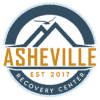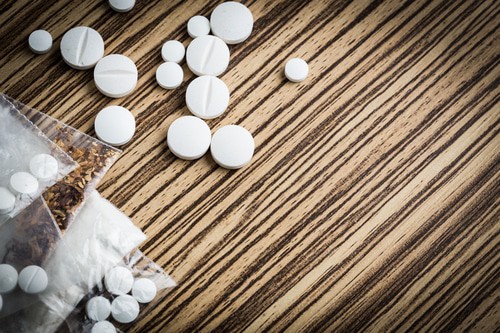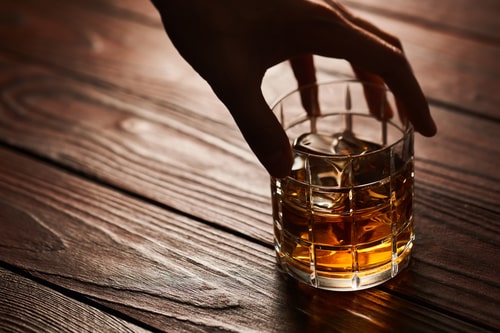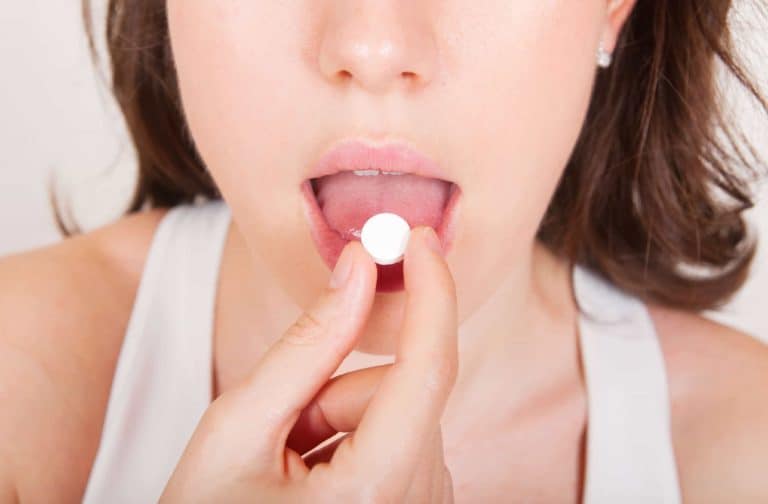Addiction doesn’t start with a needle, a bottle, or a pill.
It starts with pain.
For millions of people, addiction begins as an attempt to numb emotional wounds or quiet the chaos inside. But what starts as a temporary fix quickly becomes a life-consuming cycle that’s brutally hard to escape. If you’ve ever wondered why addiction feels like a trap — or why someone can’t “just stop” — this blog breaks it down in plain terms.
We’ll walk you through what the cycle looks like, how it works in the brain and body, and most importantly, how people actually break free from it.
What Is the Vicious Cycle of Addiction?
Addiction is more than just using drugs or alcohol over and over again. It’s a repeated loop of emotional pain, compulsive behavior, temporary relief, guilt, and the need to use again. It often looks like this:
- Pain or Emotional Trigger
- Substance Use or Behavior
- Temporary Relief
- Negative Consequences
- Shame and Guilt
- More Emotional Pain
- Repeat
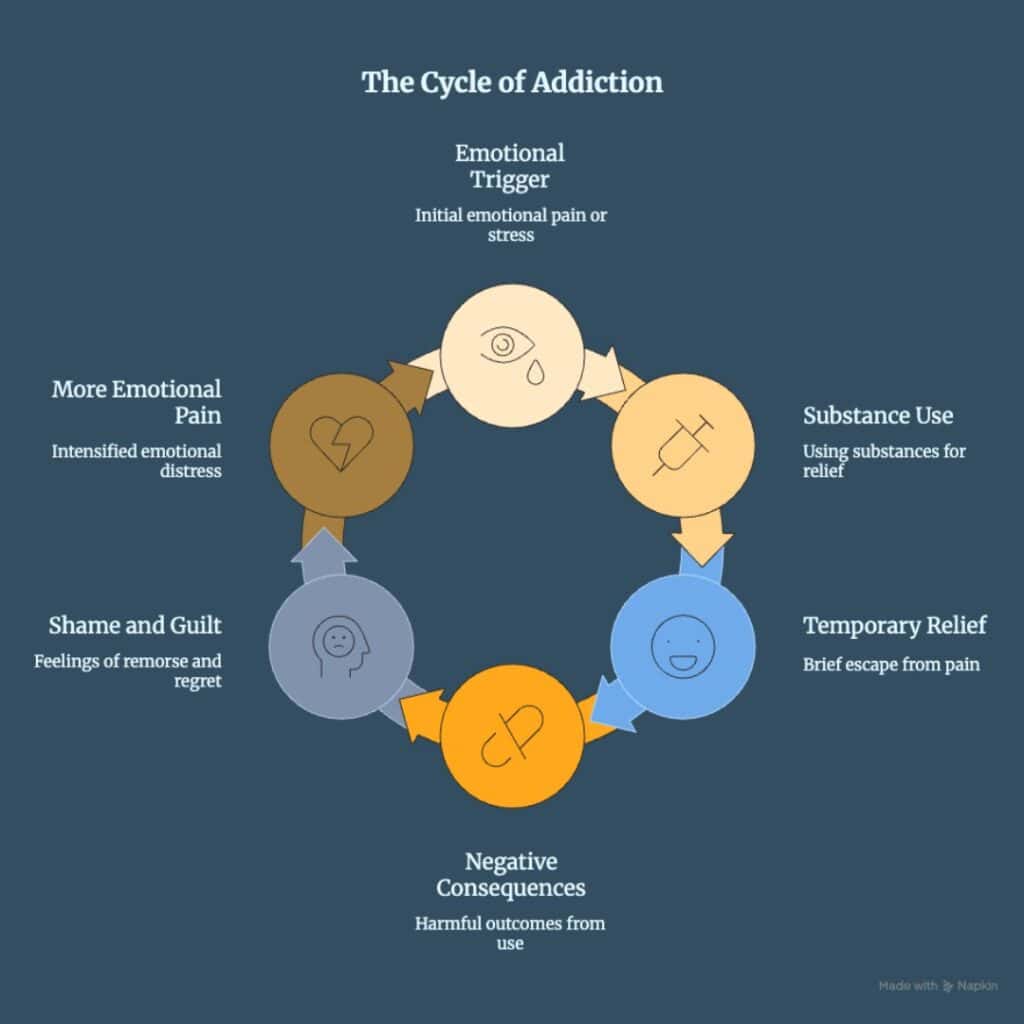
This is what makes it a cycle — and a vicious one at that.
For someone caught in addiction, it’s like living on a treadmill they never wanted to get on. Even when they’re desperate to step off, the momentum and the brain’s chemistry keep pulling them back.
Why Do People Start Using in the First Place?
Most people don’t use drugs or alcohol to feel good — they use them to feel less bad.
It might be trauma, anxiety, depression, loneliness, boredom, or even untreated ADHD. For some, the addiction started with prescription medications after surgery or chronic pain. Others fell into it trying to keep up socially or manage stress.
Whatever the cause, one truth stands strong:
No one chooses addiction.
But they do end up stuck in it.
What Happens in the Brain?
Addiction hijacks the brain’s reward system. Every time someone uses a substance, their brain gets flooded with dopamine — the “feel-good” chemical. This trains the brain to link that substance to relief, escape, or pleasure.
But over time, the brain stops producing normal dopamine levels on its own.
This means:
- Natural pleasures (like eating, laughing, or being with loved ones) no longer feel good.
- The brain starts craving more of the substance just to feel normal.
This is why addiction is classified as a chronic brain disease — it physically rewires how someone thinks, feels, and responds to stress.
The Shame Trap: How Guilt Feeds the Cycle
After a binge or relapse, most people feel overwhelmed by shame. They might say things like:
- “I hate who I’ve become.”
- “I’m ruining everything.”
- “Everyone would be better off without me.”
This shame is dangerous. It fuels depression, increases anxiety, and convinces people they’re unworthy of help. And so, to escape that feeling, they use again. Not to party. Not to celebrate.
Just to escape themselves.
That’s the heartbreak of addiction. It’s not about pleasure anymore — it’s about survival.
Physical Dependence and Withdrawal
Another layer of the cycle is physical dependence.
Once the body adapts to having drugs or alcohol in its system, removing those substances leads to painful withdrawal symptoms, such as:
- Shaking
- Sweating
- Insomnia
- Nausea and vomiting
- Muscle aches
- Depression
- Anxiety
- Seizures (in some cases)
These symptoms can be so intense that many people use again just to avoid getting sick.
This is why medical detox is so important — it helps people safely get through withdrawal and start recovery on the right foot.
The Role of Triggers
Even after detox, people still face intense cravings when triggered. Triggers can include:
- Seeing people they used with
- Visiting old hangouts
- Feeling stress or rejection
- Celebrating holidays
- Experiencing loss or trauma
Without new tools to cope, these triggers often send people back to square one.
That’s why long-term recovery isn’t just about quitting the substance — it’s about rebuilding life with healthy ways to handle stress, sadness, and joy.
Why “Just Stopping” Isn’t a Solution
Telling someone to “just stop” using is like telling someone with a broken leg to “just walk it off.”
It ignores the complex emotional, physical, and mental reasons behind the addiction. Most people want to stop. They try to stop. But without support, they often feel like they’re drowning.
Recovery requires:
- Time
- Support
- Healing
- Forgiveness
And most of all, it requires a plan.
How to Break the Vicious Cycle
So how do people actually escape this cycle?
Here’s what works — backed by science and real-life success stories:
1. Medical Detox (If Needed)
Detox is the first step when someone is physically dependent. It helps clear the substance safely and reduces withdrawal symptoms under professional care.
2. Inpatient or Outpatient Treatment
Treatment programs help people:
- Understand why they use
- Learn coping skills
- Build structure into their life
- Get therapy (individual and group)
- Heal relationships and trauma
Whether it’s inpatient rehab, partial hospitalization, or intensive outpatient programs, structured treatment is the foundation of lasting recovery.
3. Address Mental Health (Dual Diagnosis Treatment)
Many people struggling with addiction also have depression, anxiety, PTSD, or other mental health disorders. Treating both addiction and mental health at the same time — called dual diagnosis — is key.
Ignoring one usually makes the other worse.
4. Community Support (AA, NA, SMART Recovery, etc.)
Recovery can feel lonely without a tribe.
Support groups help people feel seen, heard, and encouraged — especially in hard times. Hearing others say, “Me too,” is more powerful than most people realize.
5. Healthy Habits and Self-Care
Recovery isn’t just about what you don’t do — it’s about what you replace it with. That means:
- Daily routines
- Exercise
- Nutrition
- Sleep hygiene
- Mindfulness or spiritual practices
The little things matter.
6. Build a New Identity
This might be the most overlooked step. Addiction steals someone’s sense of self. Recovery gives it back.
That might look like:
- A new job or purpose
- Healing family bonds
- Finding joy in hobbies
- Volunteering
- Going back to school
It’s about becoming someone you’re proud to be.
The Role of Treatment Centers Like Asheville Recovery Center
At Asheville Recovery Center, we’ve helped thousands of people break this cycle — not by force, but by walking with them through it. Recovery isn’t a straight line, and relapse doesn’t mean failure. It’s part of the process for many people, and what matters most is getting back up.
Our approach focuses on:
- Individualized care
- Dual diagnosis treatment
- Medical detox referrals
- Holistic healing (like cold plunges, therapy, wellness, and community)
- Aftercare planning and relapse prevention
We don’t just help people stop using.
We help them start living.
Final Thoughts: You’re Not Stuck Forever
If you’re stuck in the vicious cycle of addiction, you’re not broken.
You’re human.
And there are people out there — right now — who’ve been where you are and made it through. The cycle can be broken. It doesn’t have to keep repeating.
All you need to do is take one step today. That could be calling a friend. Booking a treatment consult. Or just admitting you want help.
Because once you admit that, everything can change.
Need Help Today?
If you or someone you love is caught in the cycle of addiction, reach out to Asheville Recovery Center. We’ve been voted the #1 treatment program in North Carolina for two years in a row by Newsweek, and we’re here to help you reclaim your life — one day at a time.
